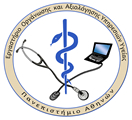Symptoms
|
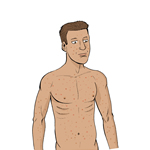 1. Vesicular skin rash which are blisters with fluid and itch on the body, face and head (scalp). 1. Vesicular skin rash which are blisters with fluid and itch on the body, face and head (scalp).
|
|
|
|
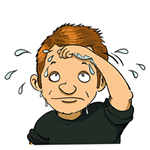 2. Fever 2. Fever
|
|
|
|
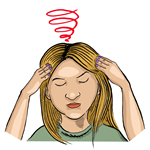 3. Headache 3. Headache
|
|
|
|
 4. Tiredness 4. Tiredness
|
Chickenpox usually lasts for 5-10 days and is highly contagious. Adults usually tend to have worse symptoms than children, and are at increased risk of complications. The most common complication is the infection of skin lesions from common bacteria and the spots in various parts of the body become larger, redder and leaking a yellow or green fluid. Pneumonia, otitis etc. may also develop.
Transmission

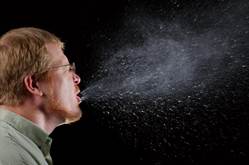
Chickenpox spreads from person to person
-
by direct contact, through airborne small droplets released from speech or cough, or the blister fluid of a person infected with chickenpox or herpes zoster,
-
by indirect contact, with articles contaminated from mucous secretions or skin lesions of a person with chickenpox.
Treatment
For the treatment of the disease, seek medical advice. In case of fever, take the antipyretics prescribed by your doctor. For itchiness relief, anti-histamine tablets may also be administered. Avoid scratching as it can lead to scarring, and keep the patient's nails clipped and clean. Dress appropriately with loose, cotton clothing in order to avoid skin irritation.
Prevention
-
Vaccination
-
If you or your child are infected with chickenpox, stay at home while the disease is contagious (i.e. until all the blisters have crusted over)
-
If you are infected with chickenpox, avoid contact with pregnant women, infants or any person with a weakened immune system, such as people undergoing chemotherapy or taking steroid drugs
-
All contaminated items or surfaces should be cleaned; regularly clean contaminated clothing or bed covers.
Vaccines
Τhe National Immunization Program (schedule) recommends two doses of the vaccine against chickenpox. Children should have their first dose of the vaccine at the age of 12-15 months and the 2nd dose at the age of 4-6 years. The chickenpox vaccine is also recommended for persons not immunized and at risk of getting sick from contact with an infected person, as well as in chickenpox outbreaks, for prevention of spreading. Vaccination within 3 days from being exposed may prevent or alter the development of the disease.
References
keelpno
nhs
cdc
National Immunization Program for Children and Adolescents 2011

















